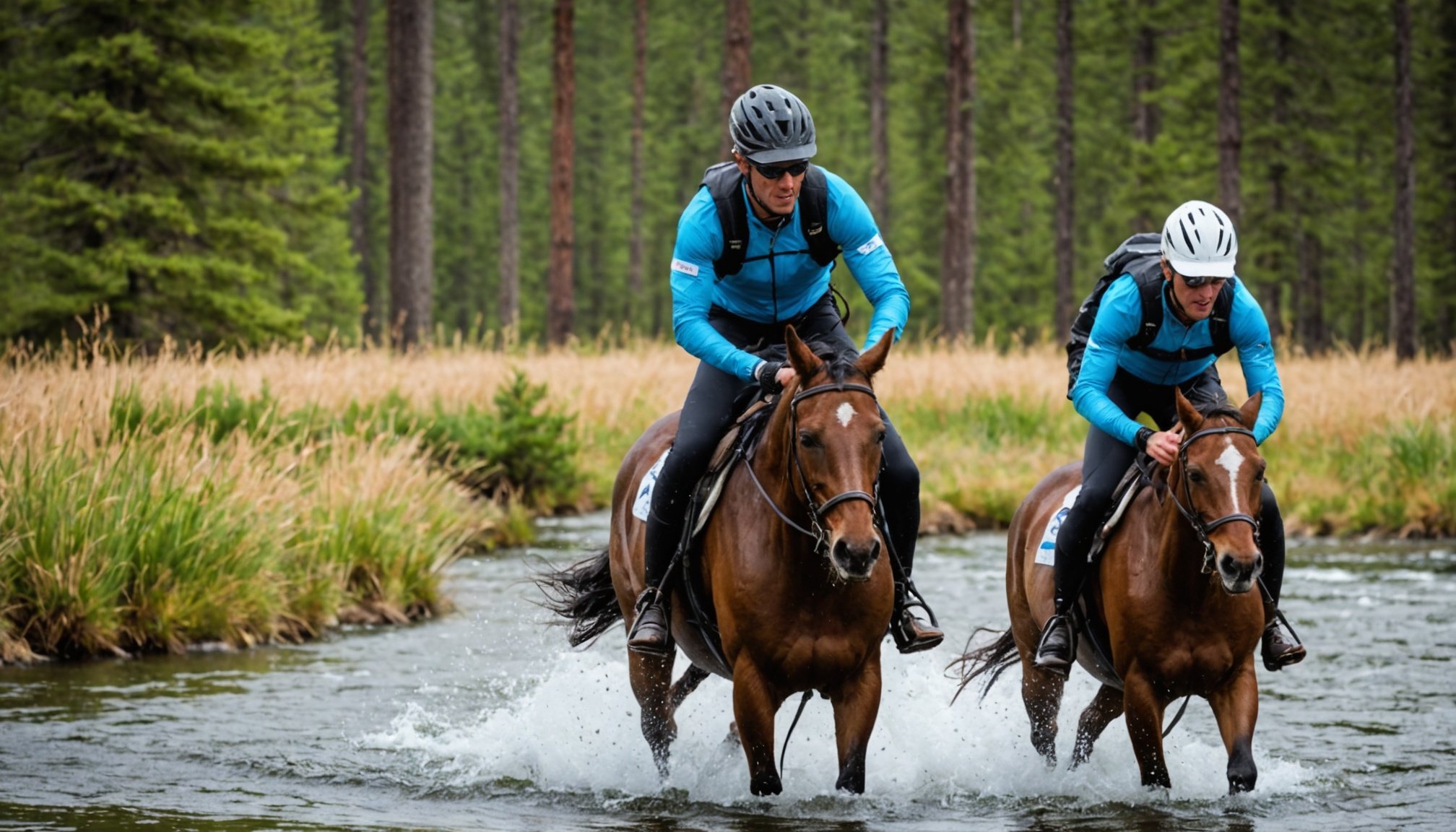Mastering Hydration: Top Techniques for Endurance Riders to Stay Energized
Understanding the Importance of Hydration in Endurance Sports
When it comes to endurance sports like cycling, running, and triathlons, hydration is more than just a necessity; it’s a critical component of athletic performance. Proper hydration can make the difference between a successful race and a debilitating case of dehydration. Lindsey Hunt, a senior sports scientist at Precision Fuel and Hydration, emphasizes the significance of understanding your sweat rate to optimize your fluid intake.
“Hydration plays a critical role in performance, and understanding your sweat rate is key to optimizing your fluid intake,” Hunt explains. This is particularly important in long-distance events where the body loses significant amounts of water and electrolytes through sweating.
Have you seen this : What are the benefits of early specialization versus multi-sport participation for young athletes?
Calculating Your Sweat Rate
To master hydration, you first need to understand how much you sweat during different activities and under various conditions. The sweat rate calculator, a tool developed from extensive research by Lindsey Hunt and his team, is a valuable resource for this.
The calculator takes into account factors such as the type of activity (running, cycling), the environment (indoor vs. outdoor, temperature), and individual variations in sweat rate. Here’s how you can use it:
Also read : What are the key elements of an effective warm-up routine for various sports?
- Determine Your Activity: Whether you’re running a 10K or cycling a long distance, the type of activity significantly affects your sweat rate.
- Consider the Environment: Hot weather increases sweat rate due to the body’s need to cool down. For example, if you’re doing an event in warm conditions, you might want to replace more fluid to support performance and health.
- Use the Calculator: Input your specific data into the sweat rate calculator to get a personalized estimate of how much fluid you’ll lose per hour.
Practical Tips for Hydration During Training and Races
Pre-Race Hydration
Before any race, it’s crucial to ensure you’re well-hydrated. Here are some tips:
- Hydrate 24-48 Hours Before: Drink plenty of water and electrolyte-rich fluids in the days leading up to your event to ensure your body is fully hydrated.
- Monitor Your Urine: If your urine is pale yellow or clear, you’re likely well-hydrated. Dark yellow or amber-colored urine indicates you need to drink more water.
- Avoid Overhydration: While hydration is key, overhydration can lead to hyponatremia, a condition where the sodium levels in your blood become too low.
During the Race
- Drink to Thirst: For shorter events like a 10K run, drinking to thirst is often sufficient. However, for longer events such as a half marathon or marathon, you need a more structured hydration plan.
- Use Aid Stations: Take advantage of aid stations to replenish fluids and electrolytes. Aim to replace 1-2% of your body weight in fluids per hour to avoid dehydration.
- Energy Gels and Electrolytes: Incorporate energy gels and electrolyte supplements into your hydration plan, especially in hot weather. These help maintain energy levels and replace lost electrolytes.
Post-Race Hydration
After the race, hydration is just as important to aid in recovery:
- Rehydrate Immediately: Drink water or a sports drink within 30 minutes of finishing your race to start the rehydration process.
- Monitor Body Weight: Weigh yourself before and after the race to determine how much fluid you lost. Aim to replace this amount over the next few hours.
- Include Electrolytes: Continue to consume electrolyte-rich fluids to replenish what was lost during the race.
Tailoring Hydration to Individual Needs
Gender and Hydration
Hydration needs can vary between men and women due to differences in body composition and hormonal factors.
- Women: Generally, women tend to have a higher percentage of body fat, which can affect sweat rate. However, individual variations are significant, and using a sweat rate calculator can provide personalized insights.
- Men: Men typically have higher sweat rates due to higher muscle mass, but again, individual differences are crucial.
Environmental Factors
The environment in which you train or race significantly impacts your hydration needs.
- Hot Weather: In hot weather, the body sweats more to cool down. This means you need to increase your fluid intake to replace lost fluids and electrolytes.
- Altitude: At higher altitudes, the air is thinner, and dehydration can occur more quickly. Increase your fluid intake accordingly.
Example Hydration Plan for a Long Distance Event
Here’s an example of how you might plan your hydration for a long distance event like a triathlon:
Pre-Race
- 24 Hours Before: Drink 2-3 liters of water and electrolyte-rich fluids.
- Morning of the Race: Consume 500-750 ml of water and an electrolyte drink.
During the Race
| Segment | Hydration Strategy |
|---|---|
| Swim | Limited hydration opportunities; focus on pre-swim hydration. |
| Bike | Drink 500-750 ml of water and electrolyte drink every hour. |
| Run | Drink 250-500 ml of water and electrolyte drink every 30 minutes. |
| Aid Stations | Use aid stations to replenish fluids and electrolytes, aiming for 1-2% body weight replacement per hour. |
Post-Race
- Immediate Post-Race: Drink 500-750 ml of water and an electrolyte drink.
- Next Few Hours: Continue to drink water and electrolyte-rich fluids to replace lost fluids.
Quotes and Insights from Experts
- Lindsey Hunt: “When it’s hotter, there’s more blood flow going to the skin surface to facilitate evaporative cooling. And so if we’ve got less blood flow available, that performance decrement happens sooner and or happens more substantially.”
- Dr. Paul Laursen: “Hydration is not just about drinking water; it’s about maintaining the balance of electrolytes in your body. This is crucial for athletic performance and overall health.”
Common Mistakes to Avoid
Overhydration
- Hyponatremia Risk: Drinking too much water can lead to hyponatremia, a serious condition that can occur when sodium levels in the blood become too low.
- Monitor Intake: Be mindful of your fluid intake and avoid drinking more than what your body can process.
Underhydration
- Performance Decrement: Inadequate hydration can lead to decreased performance, fatigue, and increased risk of heat-related illnesses.
- Listen to Your Body: Drink when you feel thirsty, and use the sweat rate calculator to ensure you’re replacing enough fluids.
Mastering hydration is a key component of successful endurance training and racing. By understanding your sweat rate, tailoring your hydration plan to individual needs, and avoiding common mistakes, you can optimize your performance and ensure you cross the finish line feeling energized and healthy.
Remember, hydration is not a one-size-fits-all solution. It requires a personalized approach that considers your specific sweat rate, the environment, and the type of activity you’re engaging in. With the right tools and knowledge, you can stay ahead of the game and perform at your best every time you ride, run, or swim.











